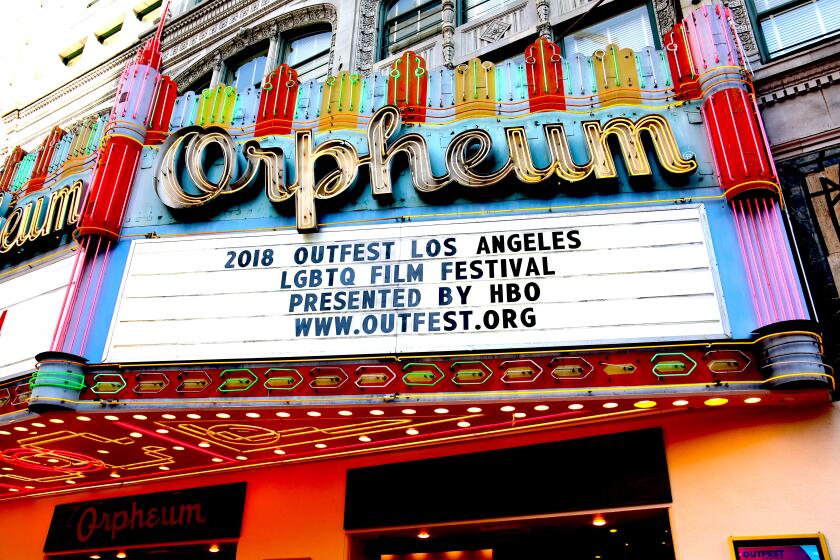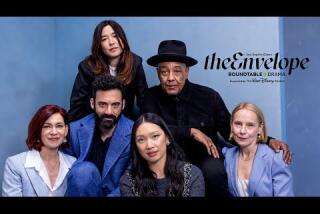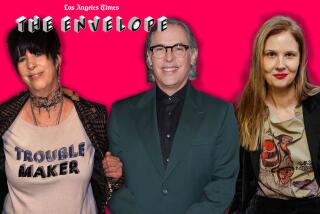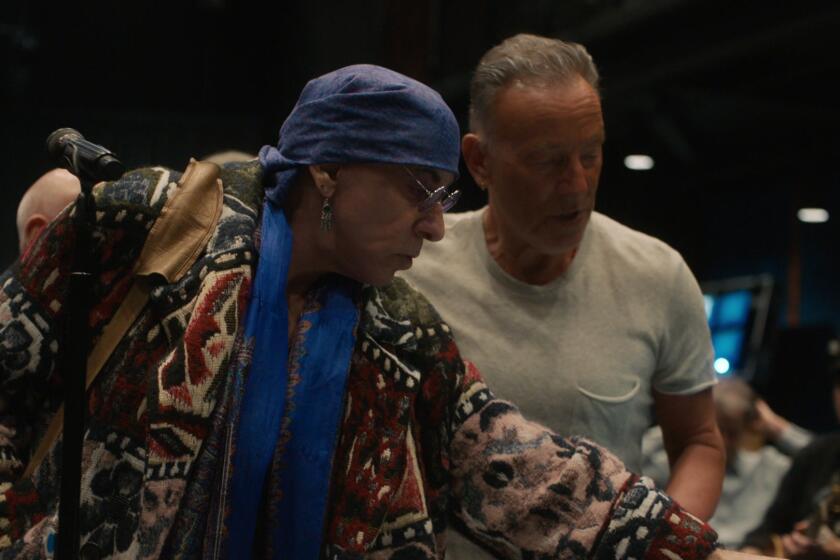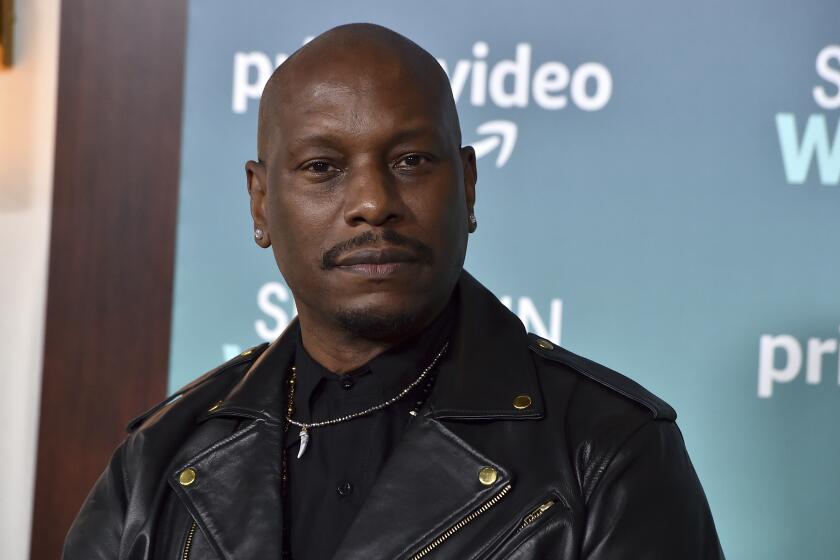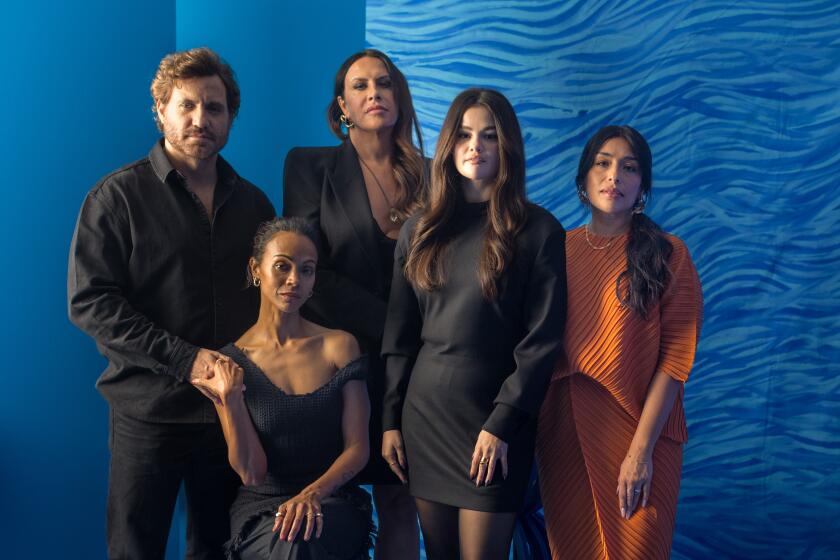How Tom Hanks finally nailed Mister Rogers’ iconic opening in ‘A Beautiful Day in the Neighborhood’
TORONTO — “A Beautiful Day in the Neighborhood” begins with Tom Hanks effortlessly executing the opening routine of Fred Rogers’ PBS program: He enters the room, walks down some stairs, opens a closet door, hangs up his jacket, pulls out his sweater, closes the door, puts on his sweater, zips up his sweater (with an audible zip!), sits in a chair, takes off a loafer, puts on a boat shoe, takes off a second loafer and puts on a second boat shoe — all while singing and smiling, of course.
Nailing that iconic sequence was one of the hardest parts of making the film, said Hanks.
“Twenty-two takes, baby,” he told reporters at a Toronto International Film Festival news conference Sunday afternoon. “You think you have a lot of time in that song? You try to come in, take a jacket off, hang it up, close the door, take one pair of shoes off and put one pair of shoes on at the same time!”
Director Marielle Heller then turned to Hanks and admitted, “When we finished those 22 takes, I realized I made it harder for you than it ever was for Fred.” Hanks asked her, surprised. “In what way?”
It turns out that, to save a few key milliseconds, each of Rogers’ boat shoes always had a loose knot already started, so that the host would only have to finish up his laces with a bow — a time-saving hack she didn’t find out about until afterward.
“I’m really sorry,” she told Hanks, who had his hands over his face throughout Heller’s explanation. He then turned to the press and shouted in jest, “This movie was a living hell!”
Inspired by Tom Junod’s 1998 Esquire profile of Rogers, “A Beautiful Day in the Neighborhood” features Matthew Rhys as a journalist assigned to write a profile of the children’s entertainer, and questions his own cynicism when faced with a worldview of optimism and goodness.
“Cynicism has become the default position for so much of our daily structure,” said Hanks. “I think when Fred Rogers first saw children’s programming, he saw something that was cynical. Why in the world would you put a pipeline of cynicism into the minds of 2- or 3-year-old kids? That you’re not cool if you don’t have this toy, that it’s funny to see somebody being bopped on the head?
“That’s a cynical treatment of an audience,” he continued. “When we are met with a simple message of, ‘Hey, it’s a beautiful day in the neighborhood,’ we get sort of slapped a little bit that we are allowed to start off feeling good. There’s a place for cynicism, certainly, but why begin with it right off the bat?”
Hanks didn’t grow up watching the program himself, as he “was already too pre-formed and too impressed by the world” when he first watched it. Heller did, though, but didn’t realize how groundbreaking his perspective truly was until she became a parent.
“He really had some beautiful, radical ideas about childhood: the idea that everybody deserves love just as they are, but also that we need to come up with ways to allow children to feel their feelings and that feelings matter and are valid,” she explained.
“What Mister Rogers did was subtle. It’s easy to overlook it, and I think for a long time, people thought of him as hokey and something to be made fun of, and he did get made fun of a lot in his day. But it was really profound, and the impact that he had was very deep. It wasn’t flashy, it was very real.”
Heller hopes that people who see this film feel free enough to question their own perspectives of the world. “I think a lot of us, we have become more cynical and jaded as we’ve gotten older. … [Watching the movie,] we get to have that cathartic moment for ourselves, I hope, where we get to let our cynicism go.”
Such was the case for co-screenwriter Noah Harpster, who had gone through years of close calls of almost getting the movie made. Yet during its world-premiere screening on Saturday night, “I realized that maybe Fred Rogers was kind of guiding this movie, and that now today is really when the movie needs to come out, even though, selfishly, we wanted it to come out years ago.”
Co-screenwriter Micah Fitzerman-Blue agreed. “We need Fred Rogers right now more than we ever did before,” he said. “He is such a balm to what feels like a fractured and broken society that is at odds with talking about our feelings, and trying to find something constructive to do with our anger, our sadness, our fear.”
One key person already approves of the movie: Joanne Rogers, Fred’s wife of over 50 years. After Saturday’s screening, Heller received an email of gratitude from Joanne. “Then she also said, ‘I really wish you could’ve known Fred,’” she told her cast and creatives. “‘I think you and he would’ve had great conversations, and I think he would’ve been proud of this film.’”
More to Read
Only good movies
Get the Indie Focus newsletter, Mark Olsen's weekly guide to the world of cinema.
You may occasionally receive promotional content from the Los Angeles Times.
